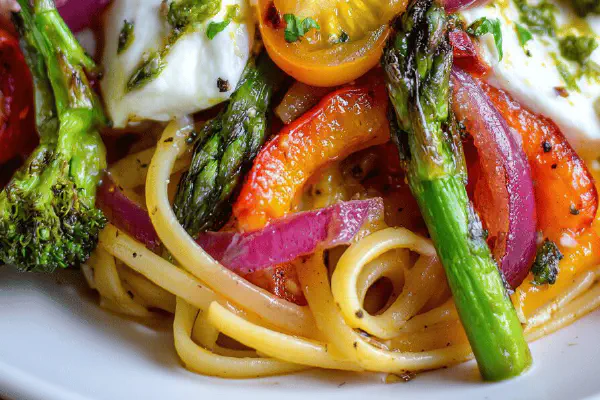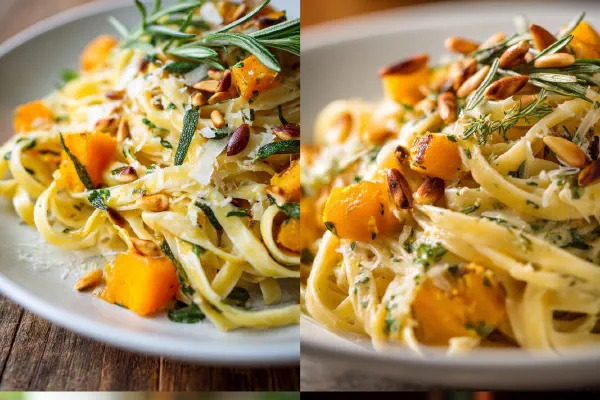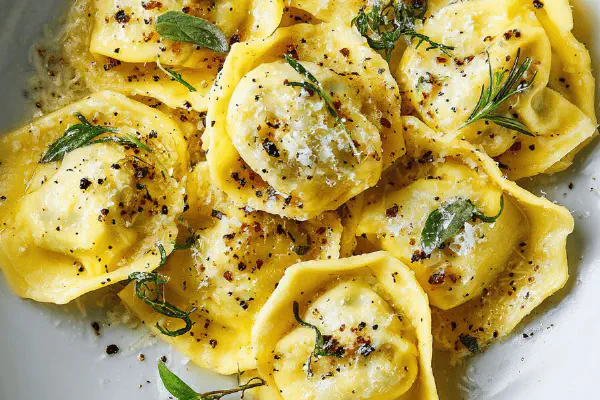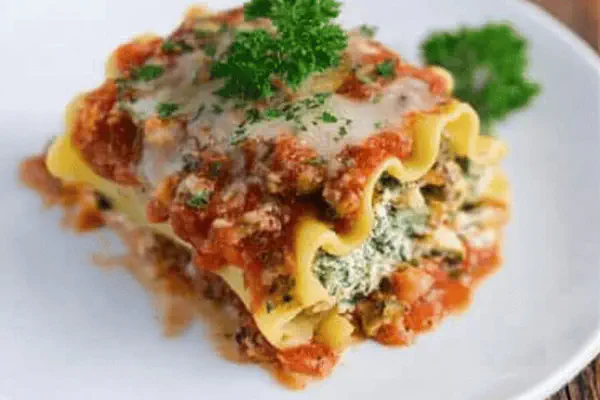Rustic Pici Pasta
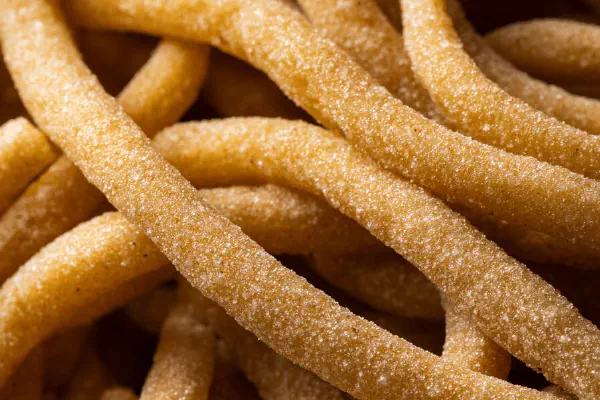
E
By Emma Kitchen
Certified Culinary Professional
•
Recipe tested & approved
Homemade pici pasta with a twist. Uses spelt flour and chickpea flour instead of white and semolina. Water temperature and kneading times adjusted. Extra step for shaping. Dust with fine cornmeal to avoid sticking. Cook in salted boiling water for 7 minutes approx. Toss with olive oil after draining. Keeps pasta slightly firm. Adds rustic texture.
Prep:
40 min
Cook:
7 min
Total:
47 min
Servings:
4 servings
#pasta
#Italian cuisine
#homemade
#vegetarian
#healthy
Flour, water, salt. Basic. But switch the usual wheat to spelt and chickpea for layered flavor and texture. Water hot enough to start dough quickly. Knead long, rough. Feel dough change. Cut strips bigger than pasta you find in store, thicker, chunky. Roll them like ropes, thick, rustic. Cornmeal dusting. Not just for looks, stops sticking when drying. Boil 7 minutes roughly, keep some water. Toss with oil, no clumps. Serve with your best sauce, or just garlic oil. Simple. Old-school. Bite with character. Forget the fancy stuff sometimes. Just raw, honest pasta. A twist on tradition.
Ingredients
- 180 ml spelt flour
- 180 ml chickpea flour
- 5 ml sea salt
- 160 ml hot water
- fine cornmeal for dusting
About the ingredients
Swapped white all-purpose and semolina with spelt and chickpea flours. Spelt brings nuttiness, chickpea a slight earthiness and firmer texture. Hot water temperature a bit higher than usual for better binding of this flour mix. Salt stays standard; critical for flavor. Dusting with cornmeal rather than semolina or normal flour to keep strands separate, less gritty, and with subtle aroma. Quantities shifted about 30 percent down from original except water a little more to hydrate new flours that absorb differently. These changes lead to a sturdier, rustic pasta that holds shape. A small but deliberate nudge away from traditional wheat semolina blends.
Method
- Combine spelt flour, chickpea flour, and salt in a bowl or food processor.
- Add hot water gradually and mix until dough starts to form, about 1-2 minutes.
- Transfer to a lightly floured surface (using chickpea flour preferred). Knead dough firmly for about 7 minutes until elastic and smooth.
- Divide dough in half. Wrap one half in cling film to prevent drying.
- Roll the other half into a rectangle roughly 16 cm wide and 4 mm thick.
- Cut dough into strips about 4 mm wide and 16 cm long.
- Optional: On unfloured surface, roll each strip under fingers to form thick rounded pici strands.
- Dust strands generously with fine cornmeal to prevent sticking. Place on tray.
- Repeat shaping and dusting with remaining dough half.
- In large pot of boiling salted water, cook pici about 7 minutes until tender yet firm.
- Drain, reserving some pasta water.
- Toss pici with good drizzle of olive oil to prevent clumping.
- Use reserved water to adjust sauce consistency if used.
Cooking tips
Start mixing dry first to evenly distribute salt. Hot water poured gradually, mix fast before it cools too much. Kneading longer, at least 7 minutes, to develop gluten with spelt and chickpea flours that behave slightly oddly compared to white flour. Resting dough briefly is optional but not needed here. Cut wider and longer strips then roll on unfloured surface for pici’s signature thick cylindrical form. Dust thoroughly, cornmeal adheres well to slightly tacky dough. Cook longer, about 7 minutes rather than 5, because chickpea flour adds density. Drain with care, preserve some cooking liquid in case sauce needs loosening. Toss with olive oil immediately to prevent drying or clumping. The steps break down traditional approach slightly to work with alternative flours and texture. Results in rustic, hand-shaped pasta with bite and charm.
Chef's notes
- 💡 Start by mixing flours. Spelt, chickpea. Salt evenly. Hot water next. Pour gradually. Mix quickly. Cooling is bad.
- 💡 Kneading is key. 7 minutes at least. Dough change noticeable. Elastic and smooth is goal. Resting optional. Shape, shape.
- 💡 Cut strips wider than store bought. About 4 mm by 16 cm. Roll into ropes. Cornmeal dusting important. Prevents sticking.
- 💡 Boil pasta in salted water. 7 minutes should do it. Chickpea flour dense. Drain carefully. Reserve water. Sauce adjustment possible.
- 💡 Toss with olive oil post-drain. Clumping bad. Good drizzle needed. Use reserved water if sauce is thick. Keeps it saucy.
Common questions
How to get nice pasta texture?
Knead longer than usual. Elasticity is crucial. Spelt, chickpea need that extra work.
Can I use regular flour?
Yes but texture changes. Not as rustic, not same flavor. Alternative flours give unique bite.
What's the best way to store leftovers?
Refrigerate in airtight container. Lasts a few days. Reheat with a bit of water.
How to adjust cooking time?
Check for texture. Always taste. Different flours, sizes affect how long it takes.
